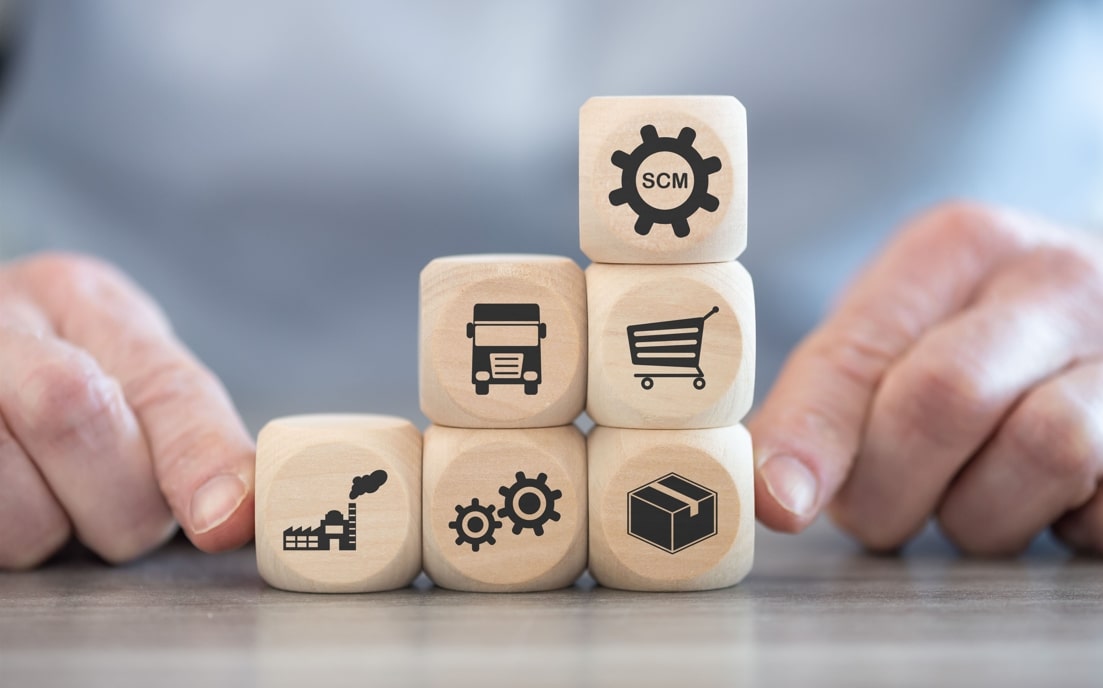The heartbeat of modern commerce isn’t just moving goods — it’s moving information. While supply chain management (SCM) orchestrates the flow of products from raw materials to end consumers, customer relationship management (CRM) fuels the conversations that drive demand. But what happens when these two systems collide?
Too many businesses still treat CRM and SCM as separate universes: one focused on nurturing buyer relationships, the other on optimizing logistics. The result? Missed forecasts, overstock nightmares, and customers left wondering why their “urgent” order is stuck in limbo.
This isn’t just about adding a chatbot to your warehouse software. The marriage of CRM and SCM is where supply chains evolve from cost centers into revenue accelerators. In this article, we’ll dissect how CRM injects humanity into logistics, why siloed data is the silent killer of efficiency, and how integrating these systems can turn your supply chain into a competitive weapon. Buckle up — we’re redefining what “customer-centric” logistics really means.
What is customer relationship management (CRM)?
CRM is the practice of treating customer data as a strategic asset — not just a list of names and purchases. It’s about systematically understanding who your buyers are, what they care about, and how they behave, then using those insights to drive decisions that boost loyalty (and revenue).
While tools automate the process, CRM’s real power lies in stitching together disjointed interactions — emails, phone calls, support tickets, social media — into a cohesive story. For instance, when a retail buyer mentions a delayed shipment during a sales call, a robust CRM flags this as a supply chain risk, not just a customer complaint. It’s pattern recognition at scale.
The goal? To stop guessing. Legacy businesses rely on gut feelings (“Our clients probably want faster delivery!”). Modern CRM-driven teams use data to know that 72% of their B2B clients prioritize supply chain transparency over speed, or that a key account’s order spikes every quarter follow a predictable trigger.
CRM isn’t static, either. With AI-driven analytics, it now predicts customer churn before it happens and automates hyper-personalized outreach. Think: restock reminders sent before a retailer’s shelf runs empty.
See SMO in action
Try our solutions with zero commitment
What is supply chain management (SCM)?

Supply chain management (SCM) is the engine that keeps products moving from raw materials to your customer’s doorstep. It’s the systematic planning, execution, and oversight of every step involved in producing and delivering goods — sourcing raw materials, manufacturing, warehousing, transportation, and distribution.
At its simplest, SCM ensures the right product reaches the right place, at the right time, and for the right cost. It’s not just about trucks and warehouses; it’s a web of interconnected decisions. For example, a single delay at a supplier’s factory can ripple into production bottlenecks, missed sales deadlines, and even reputational damage if customers lose trust.
Key components of SCM include
- Procurement: Securing materials at optimal cost and quality.
- Production: Converting raw materials into finished goods.
- Logistics: Transporting and storing inventory efficiently.
- Demand forecasting: Predicting what customers will want (and when).
- Inventory management: Balancing stock levels to avoid overages or shortages.
Unlike CRM, which is laser-focused on customer interactions, SCM prioritizes operational efficiency. But as we’ll explore later, these two systems are far from mutually exclusive — they’re two halves of a modern business’s nervous system.
CRM vs. SCM: key differences
CRM and SCM are often conflated, but they’re as different as a sales call and a shipping label. One fuels demand, the other fulfills it. Here’s where they diverge:
Focus
CRM is customer-centric, prioritizing relationships, feedback, and satisfaction. It’s about nurturing leads, closing deals, and retaining buyers.
SCM is product-centric, optimizing the flow of goods, materials, and information. It’s about minimizing costs, eliminating bottlenecks, and speeding up delivery.
Data types
CRM thrives on behavioral data: purchase history, email opens, support tickets, and sentiment analysis.
SCM relies on operational data: supplier lead times, warehouse capacity, transport routes, and inventory turnover rates.
Decision drivers
CRM answers: “What do customers want next?”
SCM answers: “How do we deliver it profitably?”
CRM in SCM: how they work together

Think of CRM and SCM as a relay race: CRM hands off the baton of what customers need, and SCM sprints to execute how to deliver it. When integrated, they turn reactive operations into predictive powerhouses. Here’s the playbook:
Demand forecasting
CRM data isn’t just for sales teams. Historical purchase patterns, customer feedback, and real-time order trends feed directly into SCM systems. Example: A food distributor notices a CRM alert that a grocery chain’s plant-based product orders spiked 30% month-over-month. SCM responds by pre-negotiating longer-term contracts with vegan suppliers, avoiding last-minute price hikes.
Personalization at scale
SCM can’t prioritize which orders to expedite if it’s blind to customer value. CRM flags high-lifetime-value clients, allowing warehouses to fast-track their shipments. Meanwhile, SCM’s logistics data (e.g., carrier delays) flows back to CRM, triggering automated updates to customers’ order-tracking dashboards.
Crisis aversion
When CRM detects a surge in customer complaints about delayed orders, SCM doesn’t just “fix the backlog” — it cross-references supplier lead times, factory schedules, and transport routes to diagnose the root cause (e.g., a single unreliable freight partner).
The magic happens when CRM’s “why” (e.g., “Customers abandon carts when delivery exceeds 3 days”) drives SCM’s “how” (e.g., Shift to regional micro-fulfillment centers).
See SMO in action
Try our solutions with zero commitment
Why is it important to incorporate CRM into SCM?
Imagine your sales team closes a record-breaking deal with a major retailer, only for the celebration to crumble when production can’t meet the deadline, or logistics botches the delivery. This isn’t just a hiccup — it’s a direct consequence of treating CRM and SCM as separate entities. Here’s why merging them isn’t optional:

Avoid costly whiplash between demand and supply
CRM data reveals what customers want, but without SCM integration, that intel gathers dust. Example: A CRM flags a 50% spike in orders for eco-friendly packaging from key accounts. If SCM isn’t looped in, procurement might stick with cheaper, non-recyclable suppliers — leading to stockouts for sustainable materials and angry buyers. Integration lets SCM pivot before the crisis.
Turn customers into co-pilots (seriously)
SCM traditionally operates in a vacuum, guessing demand based on historical sales. With CRM data, supply chains tap into real-time customer sentiment. A B2B manufacturer noticed CRM complaints about delayed custom orders, prompting SCM to reallocate factory lines for on-demand production. Result: Delivery times improved by 40%, and customer churn dropped.
Kill “overstock vs. stockout” dilemmas
CRM loyalty metrics (e.g., repeat purchase rates) help SCM distinguish VIP customers from one-time buyers. A luxury brand funnels CRM data into SCM to prioritize limited-edition inventory for high-spending clients, while diverting excess stock to discount channels flagged by CRM as price-sensitive segments.
The rise of the “unpredictable” customer
Global crises, TikTok trends, and inflation have made buyer behavior erratic. SCM can’t rely on spreadsheets — it needs CRM’s pulse on real-time sentiment. When a CRM detected a sudden demand surge for home fitness gear (thanks to a viral influencer video), SCM rerouted shipments from bulk retailers to D2C hubs, capitalizing on higher-margin direct sales.
CRM isn’t a “nice-to-have” for SCM — it’s the antidote to guesswork. Companies that fuse the two don’t just survive disruptions; they weaponize them.
CRM and SCM are better together
Let’s be blunt: A supply chain blind to customer needs is a ticking time bomb, and a CRM disconnected from logistics is just expensive wishful thinking. The businesses thriving today aren’t those with flawless warehouses or charismatic sales teams — they’re the ones weaving CRM’s customer insights directly into SCM’s operational DNA.
This isn’t about squeezing another software subscription into your budget. It’s about rewiring your business to act, not react. CRM data lets SCM teams anticipate demand shifts long before spreadsheets catch up. SCM’s real-world execution gaps (late trucks, quality issues) become CRM-led conversations to retain trust.
Yes, ERP systems are critical glue, and tools like IoT and predictive analytics add horsepower. But the heart of modern commerce? It’s the marriage of knowing your customers and serving them with precision.
If your CRM and SCM still live in separate universes, you’re not just risking inefficiency — you’re ignoring that today’s buyers don’t tolerate excuses. They expect brands to “just know.”
So, ask yourself: Is your supply chain just moving products… or is it building relationships? The ROI of merging CRM and SCM isn’t measured in cost savings — it’s counted in customers who never leave.


